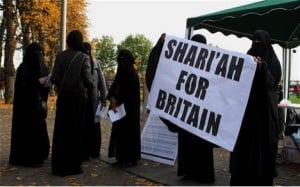
A few weeks ago, we featured a story in our Friday links about the introduction of Muslim dolls in the U.K., created to teach Muslim children about Islam. Sounds like a great idea at first, until I saw what this picture of the dolls and realized the disturbing racial implications.
The main problem comes in the name of these dolls. The dolls are called Desi Dolls. “Desi” is the term used to refer to anyone of South Asian descent – Indian, Pakistani, Bangladeshi, Sri Lankan, etc. Therefore, this includes Muslims, Hindus, Sikhs, Christians, Jains, Zoroastrians, Jews, etc. Desi is definitely not exclusive to Muslims. It is an ethnic term, not a religious one. If these dolls were for Muslims, they should have been called Muslim dolls.
However, even then, the physical form of these could not remain the same. The dolls are fair skinned – very fair skinned. In fact, very suspiciously either White or West Asian fair-skinned. Yes, among South Asians we have fair skinned people. We also have very dark skinned people and every colour in between. But these dolls depict only a small percentage of my ethnic group. A small but revered percentage.
Yes, revered. In South Asian culture, fair is the ideal skin colour. Women and men (but especially women) go to extreme lengths to make their skin fairer. Skin lightening cremes are one of the most popular skin care products. Women and men with fair skin are considered beautiful solely based on their fair skin. Children with fair skin are considered cuter than darker skinned children. Girls with darker skin can sometimes be passed over as prospective marriage partners if a lighter skinned girl comes along.
There is a great deal of pressure to be light skinned. Much of this can be traced to colonization, but I will not get into that discussion here. At this point, the focus is these dolls, which perpetuate this preference for fair skin. If these are dolls meant to appeal to desi children, as the article states, then their skin colour should at least reflect an average skin colour of most South Asians. Instead, these dolls just further perpetuate a preference for lighter skin amongst an ethnic group which has serious issues regarding skin colour.
Additionally, the Desi Doll girl, or Aamina, is wearing a headscarf. This style of headscarf is not South Asian attire. Putting aside for a moment the debate over whether or not its mandatory to cover one’s head, I think we can agree that the hijab that is on this doll has nothing to do with desi culture. This is an Arab form of clothing that has been introduced into South Asian culture. Then why in the world is this girl wearing a hijab? If one wants to promote the head cover as something that is mandatory, then why not a dupatta or chadar to cover her head? That would be more culturally appropriate. And I just hope the hijab is removable for those parents who believe the hijab is not mandatory.
Additionally, why aren’t these dolls wearing traditional desi clothes, too? Shalwar kameez would be nice. Maybe they need to come with an extra shalwar kameez suit. Although the children buying these dolls are in the U.K., they most likely still have an awareness of their traditional clothing. I know as a child, I would have loved to own a doll wearing shalwar kameezes like the ones I wore (and still wear every now and then).
Finally, I can’t help but wonder what kind of Arabic the dolls speak when you squeeze them. Are they saying Qur’anic phrases with the desi accent, English accent, or the Arabic accent? I have a suspicion that they will be recited with an Arabic accent, teaching the children tajweed, an essentially racist concept assuming that non-Arabs have to pronounce Qur’anic Arabic with an Arabic accent to “improve” their pronunciation of the verses of the Qur’an. As if saying an Arabic word with a South Asian accent distorts the meaning. If this is the case with these dolls, then they are essentially teaching the children that to pronounce Arabic with any other accent somehow denotes inferiority in the Muslim world.
Finally, I can’t help but wonder what kind of Arabic the dolls speak when you squeeze them. Are they saying Qur’anic phrases with the desi accent, English accent, or the Arabic accent? I have a suspicion that they will be recited with an Arabic accent – a racist idea in my opinion. Considering in the Muslim world many South Asians face a great deal of racism from many Arabs to the point that South Asians are lower on the Muslim hierarchy, such insistence on pronouncing “Muslim words” in an Arabic accent, whatever that accent may be, aids to only further ingrain this supposedly inferior position. Within this particular context, such insistence is problematic. If this is the case with these dolls, then they are essentially teaching the children that to pronounce Arabic with any other accent somehow denotes inferiority in the Muslim world.
These dolls may be causing more damage than good among the children they are hoping to help. The underlying racism may go undetected at the superficial level, but my fear is that these young South Asian children will nonetheless receive the subconscious message that the ideal desi Muslim girl or boy is light skinned, wears the hijab (or cap for boys), doesn’t wear traditional desi clothes, and speaks Arabic with an Arabic accent, not a South Asian or English one. I worry that the message being perpetuated by these Desi Dolls is that to be a better Muslim, one should try to be more Arab and less desi.
Editor’s note: At Sobia’s request, the post has been edited. I have kept the original paragraph in for transparency, but no more comments referring to the original paragraph will be published.











